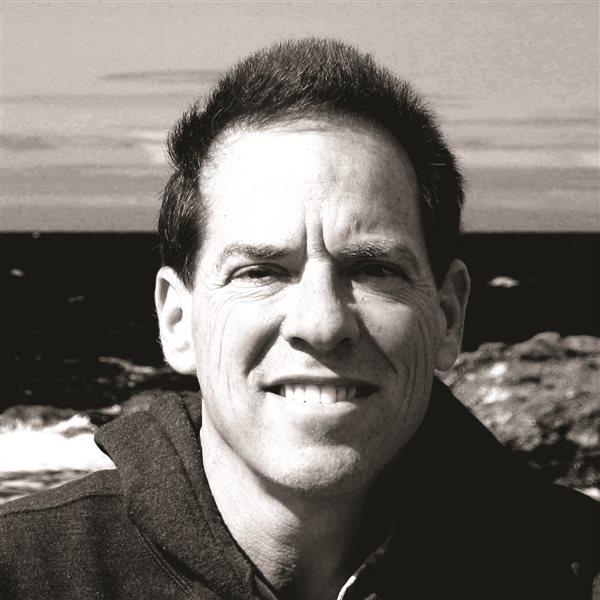Revisiting our heritage
What a lazy day. The Flying Carpet has just passed its annual inspection, and I'm eager to fly. Sure, there's work to do, but the bug has bitten and I can't resist. There must be some worthy destination close enough for a quick solo pleasure flight, but where? I blow half the morning considering the few nearby options.
At the airport, I delight in reacquainting with my freshly scrubbed Flying Carpet. A Piper Arrow taxies out behind me. From what I can see on my takeoff roll, several large people appear to be on board. The airport's density altitude display says 9,200 feet, so I hope the Piper pilot has considered the effects of heat and altitude on his takeoff performance.
The sky burns blue today, while beneath me Flagstaff's green cloak of ponderosa pines soon yields to shimmering orange and brown rock. In no time I find myself over sun-baked high desert, with not a tree in sight. Crossing the Meteor Crater I broadcast my landing intentions for Winslow-Lindbergh Regional Airport. No one answers.
Two lonely airplanes await my Flying Carpet when I land--a diminutive Beech Skipper and a Cessna 206 look like lost toys on the gargantuan parking ramp. A stray dog trots up when I park, whimpering for treats. Could he be part coyote? I shrug as if to say, "Sorry, pal, no goodies for you today." He pants as if understanding, and lopes away.
Charles Lindbergh landed here shortly after crossing the Atlantic, scouting airport locations for the first transcontinental airline route. He selected Winslow as an ideal site because of its flat terrain, strategic refueling location, and relatively low field elevation for this part of the country, at 4,941 feet. Based on Lindbergh's personal design, the airport was constructed in 1929 by Transcontinental Air Transport (TAT, later part of TWA) as one of 12 stopover points for its new 48-hour transcontinental airplane-train service.
A lone figure approaches from across the sizzling concrete. Behind him I note the tiny territorial-style adobe terminal building, overshadowed by a huge windowed hangar with "TAT" still emblazoned on the front. "I'm Ed," says the young man, finally reaching my airplane. "There's a Mexican restaurant next door," he offers. "Or if you have time, the restored La Posada Railroad Hotel is only a mile away." My mouth waters, but lacking company and noting afternoon thunderstorms blooming in the distance, I postpone the culinary delights for my next visit. We head for the terminal.
Orville Wiseman of Wiseman Aviation assumed Winslow's fixed base operations in 2007, and in cooperation with City of Winslow, trusties from the local correctional facility set about refurbishing the original 1929 terminal and hangar buildings. "It's probably the oldest continuously operated passenger service terminal in the world," he recently told me. "And the hangar would house any airplane flying at the time."
Entering the cozy terminal with its massive hearth and dark-stained beams, I imagine Lindbergh, his crew, and passengers crowded inside when he flew the first scheduled eastbound leg of the transcontinental route in 1929, from Los Angeles to Winslow. Countless other luminaries landed here during the Golden Age of aviation. I note a photo of Will Rogers seated on the same quaint patio where today's transient pilots can power up their Wi-Fi connections.
I pour myself freshly brewed iced sun tea. "I should mention that the water tastes different here," says Ed. "Even in tea, not everyone likes it. I'll make coffee in case it better suits your taste." I sample the tea. Ed's right, but I'm too thirsty to care.
Returning to the Flying Carpet, I note the Skipper taxiing away--it's good to see others flying today. I taxi to the self-serve pump. Years back we adjusted to self-fueling our cars. Now we're mastering the process in airplanes. It's easy on nice days like this, but refueling a high-wing airplane in winter or on a rainy day adds adventure to an otherwise mundane task.
The pump is battered, but it works. I unreel the obstinate hose, and several times during my 15-gallon fueling dismount from the ladder to check how many gallons I've pumped. There must be a trick to this; likely the locals have concocted some rule of thumb for counting seconds per gallon.
After visiting the ghosts of Ford Trimotors in the massive old hangar--the place looks positively empty even with a half-dozen Cessnas inside--I rotate for home. Even at almost 5,000-foot elevation, with added fuel and in 90-degree heat, my Flying Carpet fairly leaps from the ground. It's amazing the difference in takeoff performance thanks to Winslow's 2,000-foot lower elevation.
Overflying the crater, I throttle back and aim for the San Francisco Peaks dominating the western horizon. Too soon I arrive home, but with thunderstorms forming over the mountains it seems an appropriate time to land. There's no sign of the Piper Arrow, so he must have departed safely on his way.
Once again I'm reminded that flights needn't be long to be rewarding. After just an hour in the air I've gotten my fix and revisited our aviation heritage. I'm ready to head home and do some work.
Greg Brown was the 2000 National Flight Instructor of the Year. His books include Flying Carpet, The Savvy Flight Instructor, The Turbine Pilot's Flight Manual, Job Hunting for Pilots, and You Can Fly! Visit his Web site.



